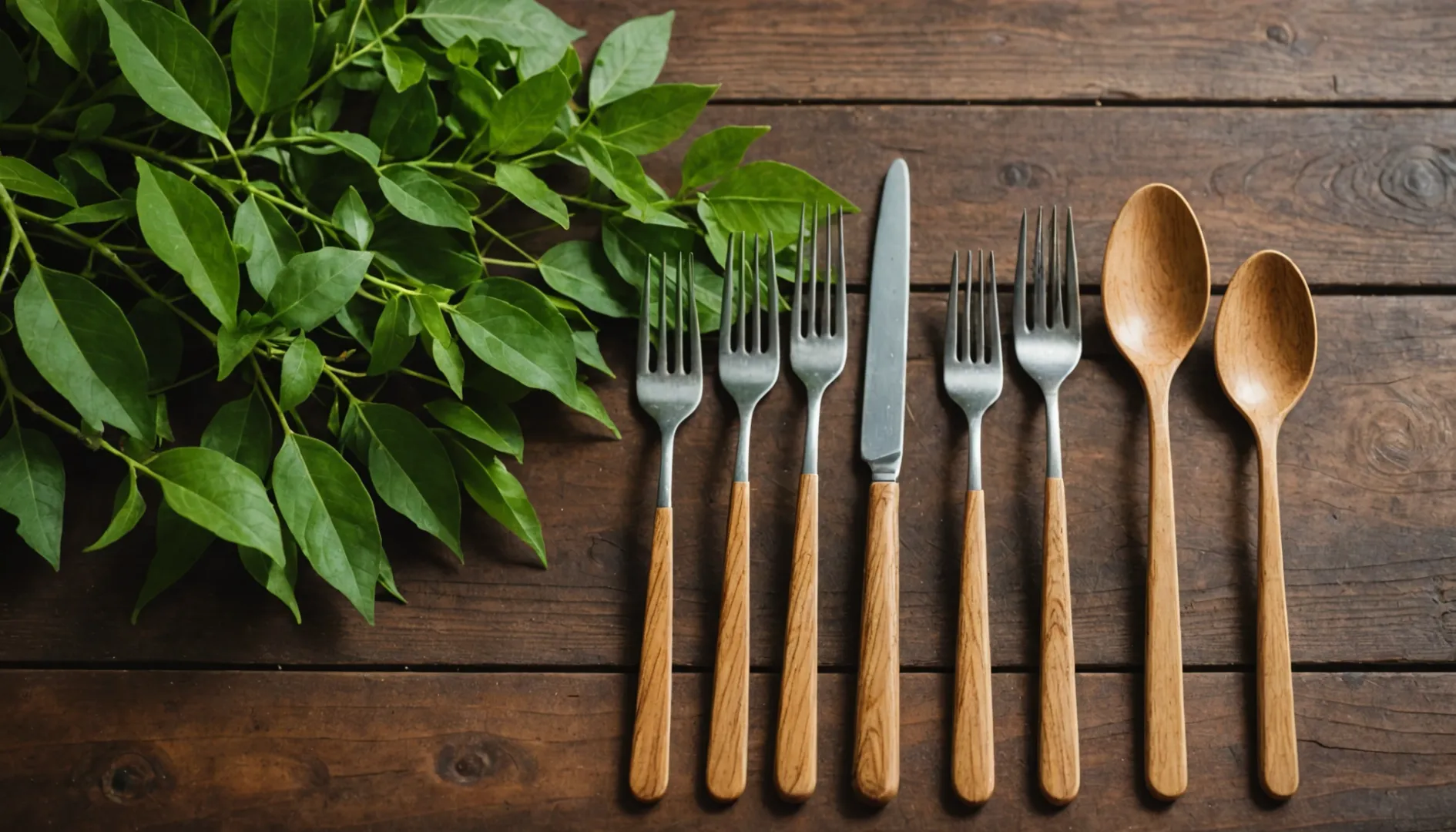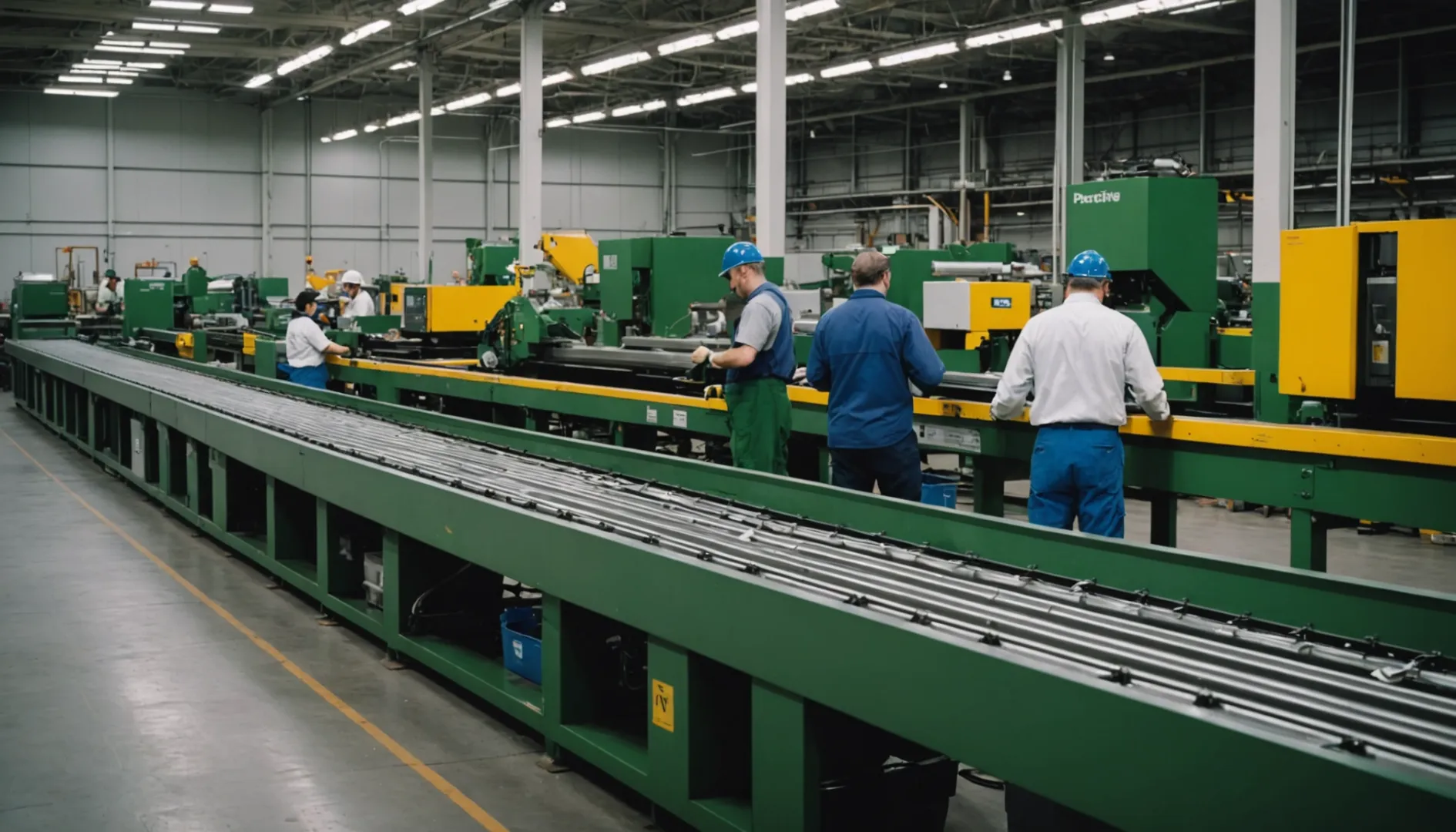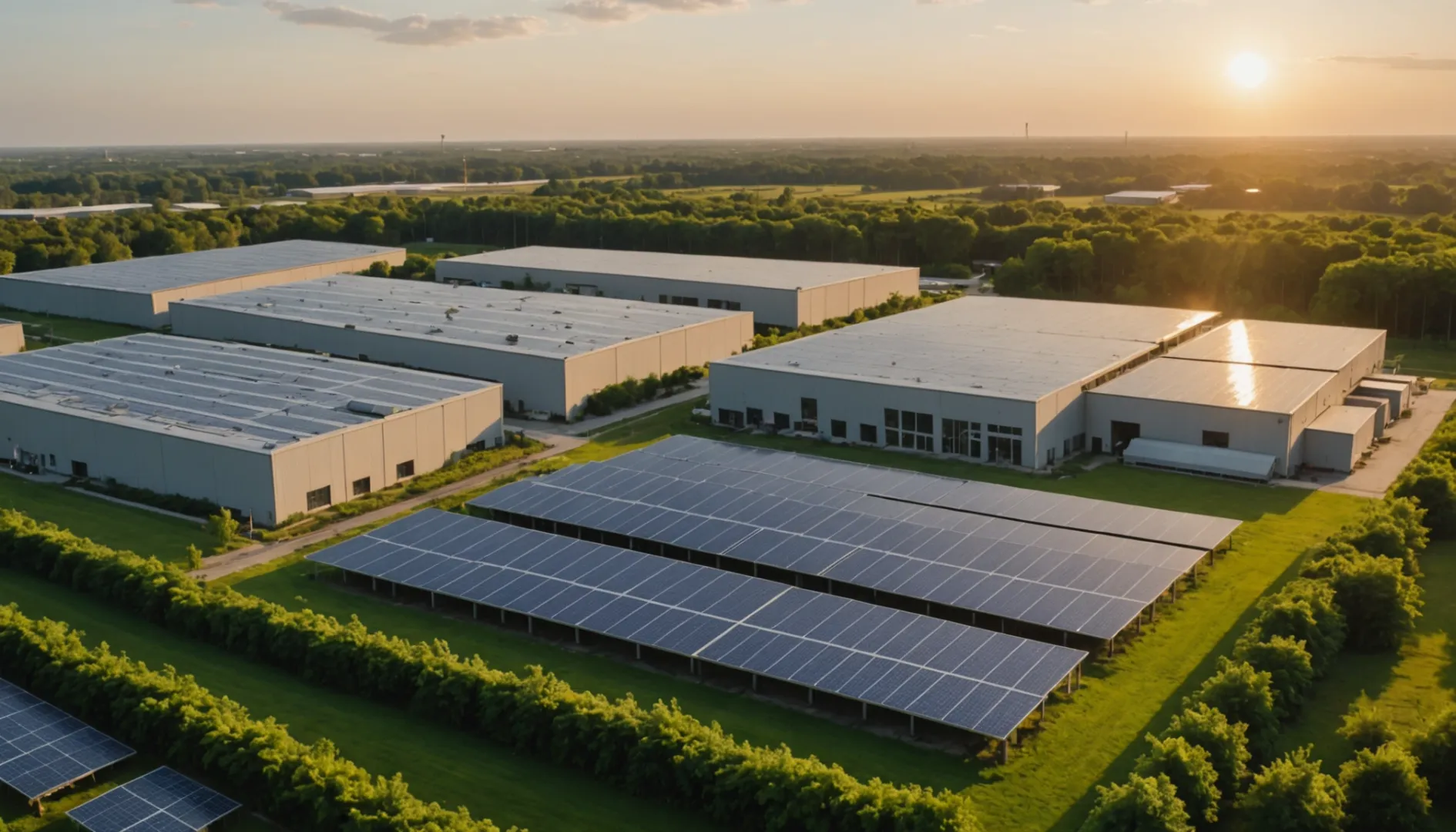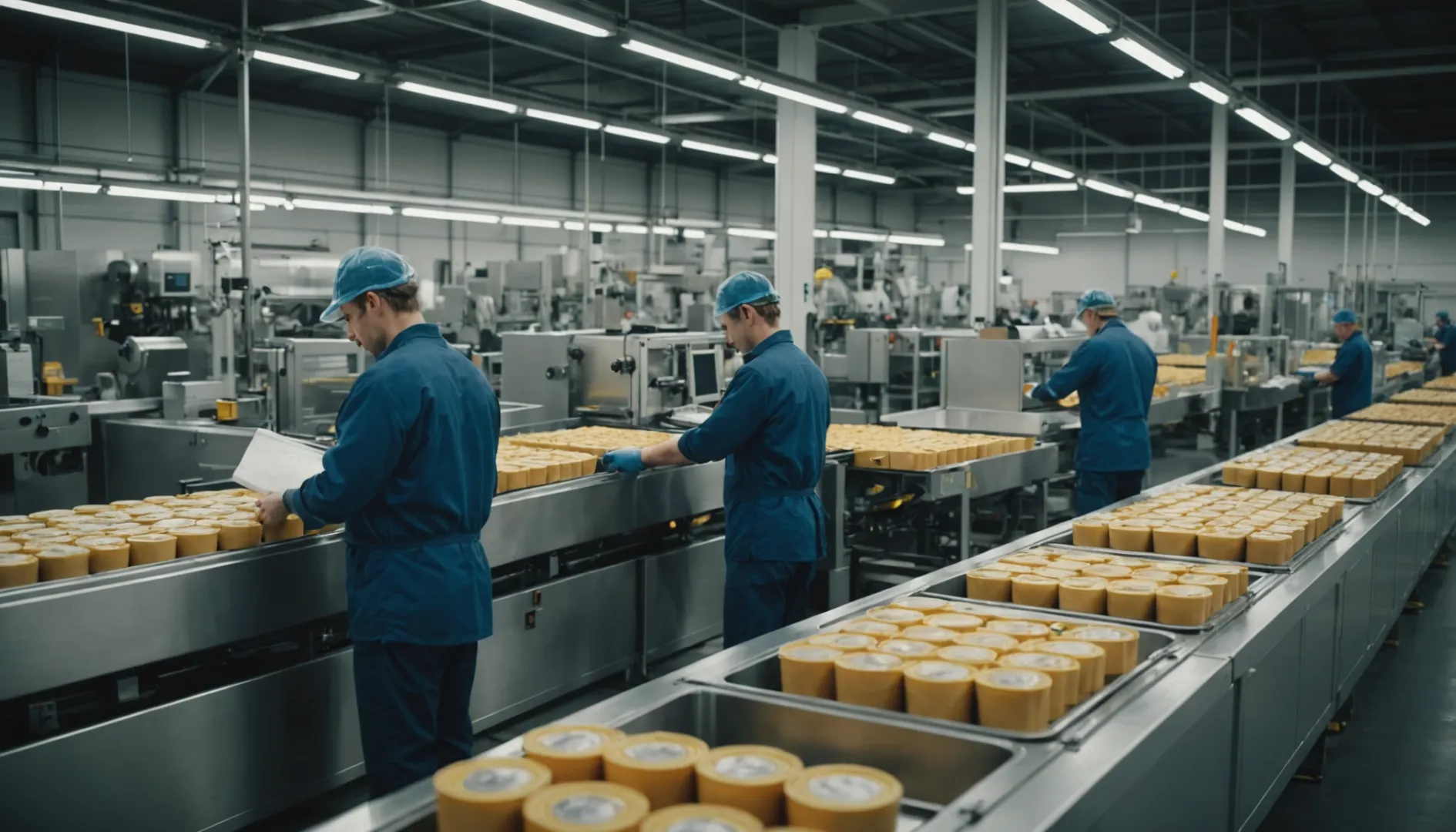
Ever stared at the price of Pactiv Evergreen's wooden cutlery and wondered why it costs so much?
Pactiv Evergreen's disposable wooden cutlery is pricier due to its dedication to eco-friendly practices, premium materials, and sophisticated manufacturing techniques that prioritize safety and sustainability.
I remember standing in a store aisle, clutching a pack of Pactiv Evergreen wooden forks and knives, hesitating over the price tag. I thought, "Is this really worth it?" But then I realized it’s not just about cutlery; it's about investing in the planet. These utensils are crafted from sustainably sourced wood and manufactured with precision to reduce environmental impact. When you think about it, you're paying for more than just a fork or spoon. You're supporting a company that's truly committed to sustainable practices, which is something I find increasingly important as I try to make more conscious purchasing decisions. Compared to plastic alternatives, these wooden options are a step towards a greener future.
Pactiv Evergreen ships products globally.False
Pactiv Evergreen only distributes across North America, not globally.
Pactiv Evergreen uses renewable materials in all products.False
They aim to shift to renewable materials but haven't fully transitioned yet.
What Makes Pactiv Evergreen's Wooden Cutlery Eco-Friendly?
Ever wondered what goes into making Pactiv Evergreen's wooden cutlery so special? Let's dive into the sustainable materials behind this eco-friendly option.
Pactiv Evergreen's wooden cutlery is made from sustainably sourced birch wood, chosen for its strength and eco-friendliness. This ensures that the cutlery is durable, biodegradable, and compostable, perfectly aligning with the company's sustainability goals and commitment to reducing environmental impact.

The Choice of Birch Wood
I remember the first time I held a piece of Pactiv Evergreen's wooden cutlery at a picnic. It felt different—smooth and sturdy. That's because it's crafted from sustainably sourced birch wood1. Birch is not just any wood; it's renewable, strong, and has a wonderfully smooth texture, which makes it perfect for utensils. Plus, it grows quickly, so it doesn't leave a heavy environmental footprint, a big win in my book.
Biodegradable and Compostable Properties
One of the reasons I switched to birch wood cutlery is its ability to break down naturally. Unlike plastic that lingers for centuries, Pactiv Evergreen's utensils are both biodegradable and compostable. So when I toss them in the compost bin, I know I'm contributing to a greener footprint2, which feels pretty great.
Manufacturing Process
Understanding how things are made fascinates me, and Pactiv Evergreen's approach is impressive. Their manufacturing process isn't just about churning out products—it's about sustainability at every step. With British Retail Consortium certification3 ensuring food safety and quality, the company also focuses on reducing water and energy use. It's comforting to know that each utensil is part of a larger effort to protect our planet.
Sustainability Initiatives
Sustainability is more than a buzzword at Pactiv Evergreen; it's a mission. They aim to transition to entirely recyclable and renewable materials across all product lines, not just cutlery. This includes everything from beverage cartons4 to disposable bags. Their dedication to using renewable resources shows a real commitment to reducing their carbon footprint. It makes me feel optimistic about the future when companies take these steps seriously.
Pactiv Evergreen ships products globally.False
Pactiv Evergreen only distributes products across North America.
Pactiv Evergreen aims for recyclable materials.True
The company plans to fully transition to recyclable and renewable materials.
How Does Pactiv Evergreen Ensure Sustainability in Their Products?
Ever wondered how Pactiv Evergreen is weaving sustainability into its products? Here's a sneak peek into their eco-friendly journey.
Pactiv Evergreen ensures sustainability by prioritizing recyclable and renewable materials, adhering to stringent food safety standards, and setting ambitious environmental goals.

Commitment to Recyclable and Renewable Materials
When I think about my own journey towards living more sustainably, I remember those first steps—recycling more diligently, using reusable bags, and choosing products that aligned with my values. Pactiv Evergreen is on a similar path, but on a much grander scale. They've made a significant shift towards using recyclable and renewable materials in their products. This isn't just a tick-the-box initiative; it's a genuine drive to reduce their environmental footprint while still ensuring their packaging solutions remain top-notch in quality and functionality. Imagine discovering that your favorite beverage carton is made from responsibly sourced materials—it's like taking a sip of the future, one that's kinder to our planet.
Achieving High Food Safety Standards
I once volunteered at a local food bank, and it opened my eyes to the importance of food safety. It’s not just about keeping food fresh; it’s about protecting people’s health. Pactiv Evergreen gets this. They've achieved the British Retail Consortium certification across most of their manufacturing plants. This means they adhere to strict guidelines that ensure sustainability does not compromise safety. It's like having a reassuring seal of approval that says, "We've got your back." practices5
Environmental Goals and Initiatives
Setting goals is something I do in my personal life—like when I decided to run my first marathon or cut down on plastic use. Pactiv Evergreen's environmental goals are similarly ambitious but on a corporate scale. They aim to switch entirely to renewable resources in their manufacturing processes, sourcing materials that are biodegradable and recyclable. It’s like running a marathon for the environment—difficult but incredibly rewarding. They also engage in initiatives to reduce waste and energy consumption, striving to close the loop in their production cycles globally6.
Challenges in the Transition
Whenever I've tried something new, like learning to play the guitar, I've faced challenges—it's part of the process. Pactiv Evergreen's shift towards sustainability is no different. Transforming existing manufacturing processes to sustainable alternatives requires time and investment. But here's the thing: they’re committed. By setting clear goals and regularly reviewing their strategies, they're tackling these hurdles head-on, aiming for a sustainable future in packaging solutions7.
Pactiv Evergreen ships products globally.False
Pactiv Evergreen's distribution network is limited to North America.
Most Pactiv Evergreen plants have BRC certification.True
Their manufacturing plants meet high food safety and quality standards.
What Are the Environmental Benefits of Using Wooden Cutlery?
Switching to wooden cutlery feels like taking a stand for the planet, but what makes it genuinely beneficial for the environment?
Wooden cutlery is eco-friendly because it reduces plastic waste, is biodegradable, and uses renewable resources. This helps decrease pollution and alleviates the strain on landfills, making it a superior environmental choice compared to plastic utensils.

Reducing Plastic Waste
I remember the moment it hit me how much plastic we casually toss away without a second thought. It was during a beach cleanup event when I stumbled upon a pile of plastic forks buried in the sand. That day, I realized how vital it is to find alternatives that don't end up clogging our oceans. Wooden cutlery shines in this aspect. Unlike its plastic counterparts, which can linger in landfills and oceans for centuries, wooden utensils break down swiftly and naturally, easing the waste burden.
The production of wooden cutlery also consumes fewer fossil fuels than that of plastics, which require energy-intensive processes8 involving oil extraction and refinement. By opting for wooden utensils, we can directly cut down on our carbon footprint and help combat climate change.
Supporting Renewable Resources
I've always been fascinated by how nature replenishes itself. When I learned that wooden cutlery often comes from sustainably managed forests, it felt like nature's way of giving back. These forests are not only a source of raw materials but are also carefully managed to ensure they thrive. This is in stark contrast to the extraction of petroleum needed for plastic.
Opting for wooden cutlery means supporting these sustainable practices. Many producers follow strict guidelines, like those set by the Forest Stewardship Council (FSC), ensuring that every piece of wood used contributes to conservation and biodiversity.
Conserving Marine Life
Plastic pollution in our oceans is heartbreaking, especially when I think about how marine animals mistake plastic bits for food. Choosing wooden cutlery helps curb this crisis as it doesn't break down into microplastics—those tiny but mighty pollutants threatening marine life.
By switching to wooden utensils, we reduce the stream of plastic waste reaching our waters, offering a glimmer of hope for healthier aquatic ecosystems.
Encouraging Responsible Disposal
One thing I love about wooden cutlery is how seamlessly it fits into composting. Imagine having a picnic and then turning your utensils into rich compost for your garden—it's a beautiful cycle. While not all of us have access to composting facilities yet, these are gradually expanding, marking a positive shift towards greener waste management.
Wooden cutlery can be composted along with organic waste, enriching soil quality without leaving toxic residues. This encourages a more responsible approach to waste management by promoting composting practices both at home and in industrial settings.
Promoting Eco-Friendly Manufacturing
Wooden cutlery's journey from tree to table tends to tread lightly on our planet. The processes involved use less energy and water than those required for plastics. I've heard of companies using innovative methods9 like repurposing wood residues from other industries—talk about resourcefulness!
As more people choose wooden over plastic, it fuels demand for these eco-conscious manufacturing techniques that align with global sustainability goals. Supporting these efforts feels like being part of something bigger—collectively striving for a healthier planet.
Pactiv Evergreen operates globally.False
Pactiv Evergreen only distributes products across North America.
Pactiv Evergreen's plants have BRC certification.True
Most of their manufacturing plants meet British Retail Consortium standards.
How Does Wooden Cutlery Compare to Plastic Alternatives?
Ever stood in the kitchen, holding a wooden fork in one hand and a plastic one in the other, wondering which is better for the planet? Let’s dive into this dilemma together.
Wooden cutlery is generally more eco-friendly than plastic because it decomposes naturally, avoiding long-term pollution. Unlike plastic, which lingers in landfills for centuries, wood is biodegradable and comes from renewable resources, making it a sustainable choice for environmentally conscious individuals.

Environmental Impact
I remember the moment I realized how much waste we produce with everyday items. A quick cleanup after a picnic turned into a small mountain of trash, mostly plastic utensils. That's when I started exploring alternatives, and wooden cutlery caught my eye. Unlike their plastic counterparts that stick around forever in landfills, wooden utensils are biodegradable10 and compostable. This means they break down naturally without leaving a permanent scar on our planet. So if you're like me and want to minimize your environmental footprint, wooden cutlery might be your new best friend.
Sturdiness and Usability
At first glance, I thought plastic would be sturdier. After all, it's flexible and doesn't break easily. But I was surprised when I tried some high-quality wooden cutlery at a friend's barbecue. They held up just as well under the pressure of cutting steak! Sure, plastic is versatile and can handle almost anything you throw at it food-wise, but wooden options have improved dramatically in design and durability. It turns out they’re not just for salads anymore.
Cost-Effectiveness
I used to think that going green meant spending more green, but the times are changing! While plastic cutlery is cheap due to mass production, the gap is closing as more people demand sustainable options. Buying wooden utensils in bulk can actually be quite cost-effective11, especially if you're running a business and looking to boost your eco-friendly credentials. It's a win-win: help the planet and your pocket.
Hygiene Considerations
Hygiene was a big concern for me at first. We've all heard horror stories about splinters or wooden utensils absorbing flavors. But modern manufacturing techniques have come a long way. Wooden cutlery now often comes with food-safe coatings that prevent these issues. So whether you're hosting a dinner party or just having lunch at work, you can trust that both wooden and plastic options are safe—if made correctly.
Aesthetics and Experience
Let’s be honest: sometimes it’s all about the look and feel. Wooden cutlery has that rustic charm that elevates any meal into an experience. Whether it's a cozy family dinner or a chic outdoor wedding, wood adds a touch of nature that plastic just can't match. And who doesn't love dining with style? The choice between materials12 often comes down to personal preference and the context of use.
Pactiv Evergreen was founded in 2020.True
Pactiv Evergreen Inc. was officially founded in 2020.
Pactiv Evergreen ships products globally.False
The company only distributes across North America, not globally.
Conclusion
Pactiv Evergreen's wooden cutlery is costly due to eco-friendly materials, sustainable manufacturing, and a commitment to reducing environmental impact, making it a worthwhile investment for conscious consumers.
-
Understand why birch wood is ideal for sustainable utensils. ↩
-
Learn about the environmental impact of using biodegradable cutlery. ↩
-
Explore how BRC certification ensures product quality and safety. ↩
-
Discover the materials used in Pactiv Evergreen's eco-friendly cartons. ↩
-
Learn about rigorous food safety standards set by this certification. ↩
-
Explore their extensive North American operations and distribution network. ↩
-
Discover innovative eco-friendly packaging options available today. ↩
-
Explore how reducing fossil fuel consumption benefits the environment. ↩
-
Learn about eco-friendly manufacturing techniques for wooden products. ↩
-
Discover how biodegradable wooden cutlery benefits the environment. ↩
-
Learn how bulk purchasing makes wooden cutlery affordable. ↩
-
Explore why wooden cutlery enhances dining experiences. ↩

